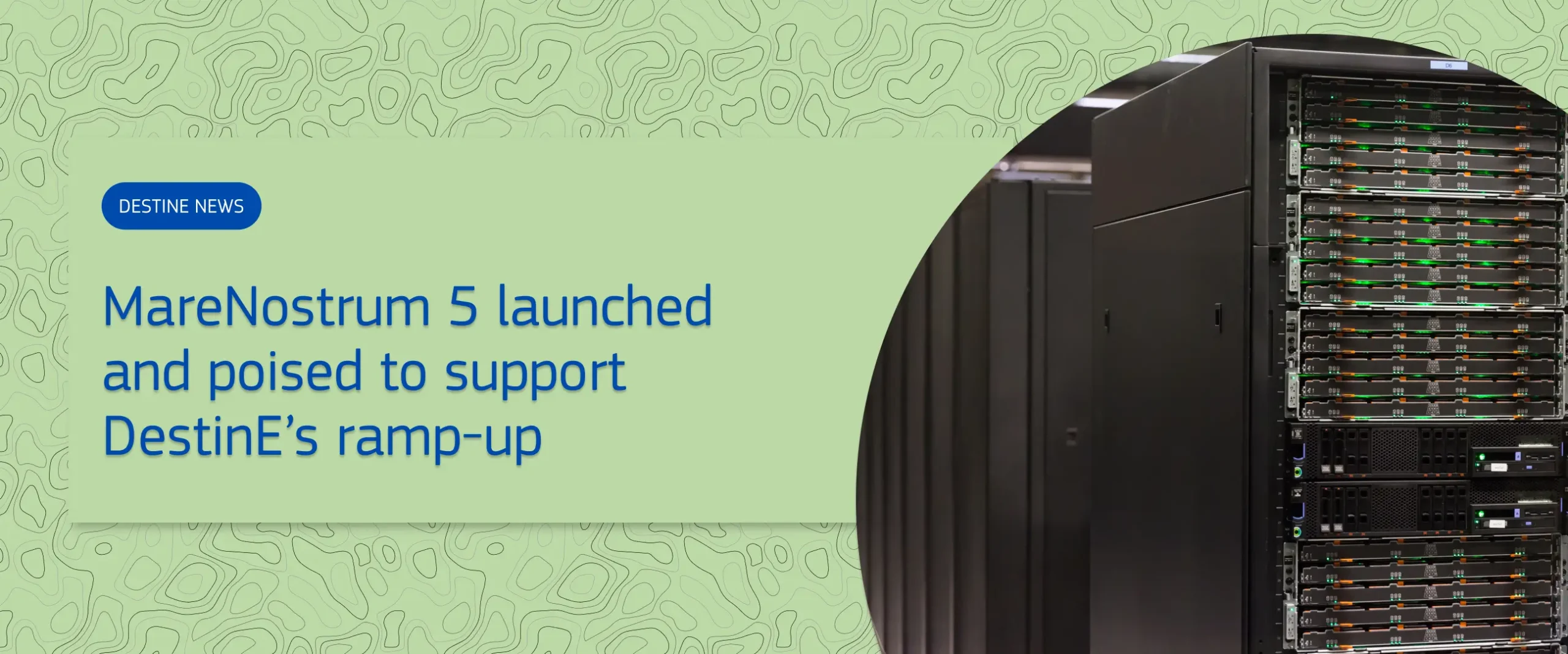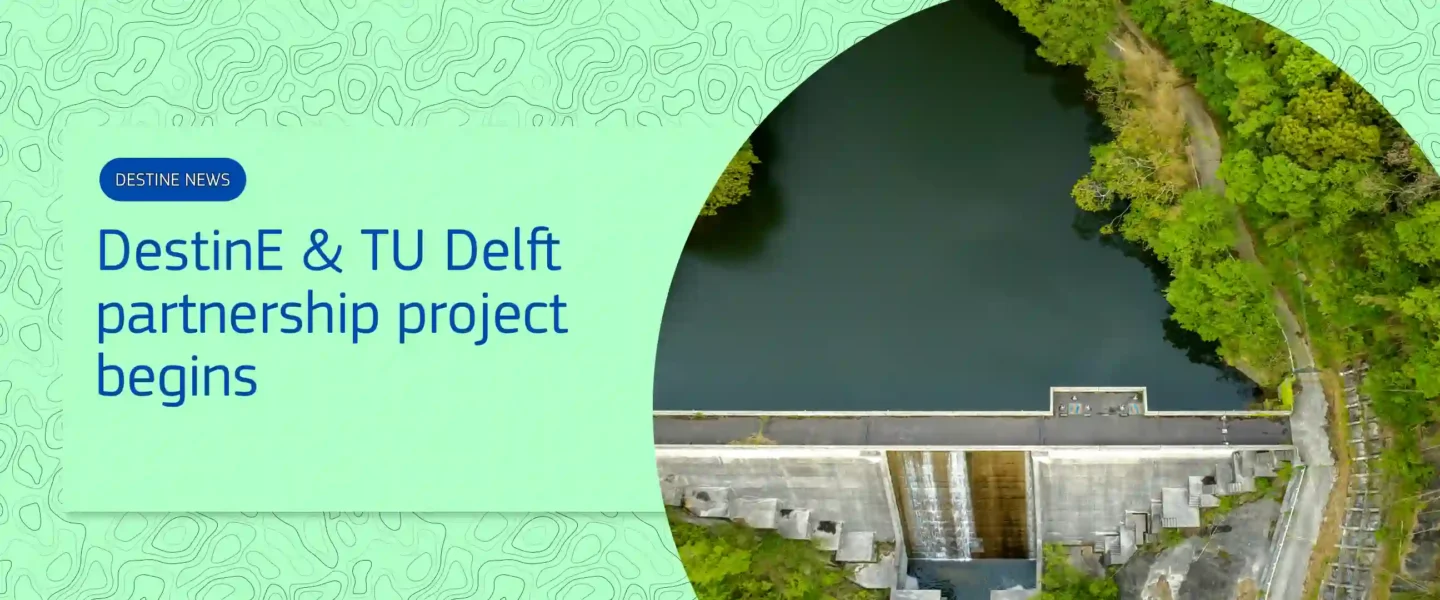MareNostrum 5 launched and poised to support DestinE’s ramp-up

The recent launch of supercomputer MareNostrum 5 comes just in time as the Destination Earth (DestinE) initiative heads to its second phase in mid-2024.
Last month at the Barcelona Supercomputing Centre (BSC), MareNostrum 5 was launched, becoming the latest world-class European supercomputer to be inaugurated. It will be accessible to a wide range of European scientific and industry users from March 2024.
In support of DestinE, MareNostrum 5 will be contributing to the Digital Twin on Climate Change Adaptation (Climate DT). With DestinE providing climate simulations at an unprecedented pace and spatial resolution and making the data available to users as they are produced, large amounts of computing power will be required. This why state-of-the-art supercomputers like MareNostrum 5 are needed.
In the same month that MareNostrum 5 was launched, DestinE’s two-year-long Phase Two was confirmed. It is during this phase that the Climate DT will be operational. In addition, end-to-end workflows of the Digital Twins on EuroHPC will aim towards operation-level execution through the Digital Twin Engine.
Advancing European capabilities
MareNostrum 5 has a peak performance of 314 Petaflops, or 314 million billion calculations per second. Notably, it now also claims the title of the greenest supercomputer in Europe as it is largely operated on not only high energy efficiency but also repurposes the heat generated from its operation to warm its hosting facility, like the LUMI supercomputer in Finland, also involved in DestinE’s digital twins.
Speaking at its inauguration, BSC Director Mateo Valero said, “We are very proud of the arrival of the new MareNostrum 5, one of the most important machines in Europe and the world to advance in the great challenges of science, such as the digital twin of the Earth, which we seek to develop as part of the Destination Earth, one of Europe’s great bets efforts to combat climate change.”
“Supercomputers are instruments at the service of science and engineering, accelerators of theory that allow the development of digital twins in very diverse and essential fields for society, such as climate change or precision medicine,” he said.
The MareNostrum 5 paves the way for the next MareNostrum 6, a milestone that could be a reality in 5- or 6-years’ time.
MareNostrum 5 will also advance European ambitions in several areas, not just for DestinE and other digital twins. For example, it is intended to help European medical research by supporting drug and vaccine development and carrying out virus spread simulations. It can also be used for traditional supercomputing applications, in areas such as climate research, engineering, materials science and Earth sciences.
The Spanish supercomputer joins the other seven significant European supercomputers operated by the EuroHPC Joint Undertaking (EuroHPC) including Discoverer in Bulgaria; MeluXina in Luxembourg; Vega in Slovenia; Karolina in Czechia; LUMI in Finland; LEONARDO in Italy; and last but not least its closest counterpart Deucalion in Portugal.
EuroHPC grants DestinE strategic access to MN5, Lumi, Leonardo and MeluXina.
Learn more about the EuroHPC Joint Undertaking at the upcoming EuroHPC Summit 2024.

